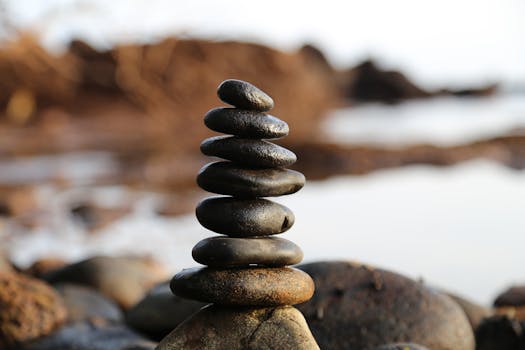
“
Mindfulness Practices for Stress Relief: Finding Calm in a Busy World
Mindfulness practices for stress relief are becoming increasingly popular, and for good reason. With the demands of modern life, it’s easy to get caught up in stress and anxiety. However, by incorporating mindfulness practices into your daily routine, you can improve your mental and emotional well-being, reduce stress, and increase your overall sense of calm and clarity.
What is Mindfulness?

Mindfulness is the practice of being present in the moment, paying attention to your thoughts, feelings, and sensations without judgment. It’s about cultivating awareness and acceptance of the present moment, rather than getting caught up in worries about the past or future. Mindfulness is often practiced through meditation, deep breathing, and yoga, but it can also be incorporated into daily activities such as eating, walking, or even doing the dishes.
Benefits of Mindfulness for Stress Relief

The benefits of mindfulness for stress relief are numerous. By practicing mindfulness, you can:
- Reduce stress and anxiety
- Improve your mood and overall sense of well-being
- Enhance your ability to focus and concentrate
- Improve your sleep quality
- Boost your immune system
- Increase your self-awareness and self-acceptance
Mindfulness Practices for Stress Relief

There are many mindfulness practices that can help with stress relief. Some of the most effective include:
- Meditation: Sitting quietly, focusing on your breath, and letting go of distracting thoughts
- Deep breathing: Taking slow, deep breaths to calm your nervous system
- Yoga: Combining physical movement with deep breathing and mindfulness techniques
- Body scan: Lying down or sitting comfortably, and bringing your attention to different parts of your body
- Walking meditation: Paying attention to your feet touching the ground, the sensation of your feet moving, and the rhythm of your breath
Incorporating Mindfulness into Your Daily Routine

Incorporating mindfulness into your daily routine can be simple and easy. Here are some tips to get you started:
- Start small: Begin with short periods of mindfulness practice, such as 5-10 minutes a day, and gradually increase as you become more comfortable with the practice
- Make it a habit: Incorporate mindfulness into your daily routine, such as right after waking up or before bed
- Find a quiet space: Identify a quiet, comfortable space where you can practice mindfulness without distractions
- Be gentle with yourself: Remember that mindfulness is a practice, and it’s okay if your mind wanders. Gently bring your attention back to the present moment
Common Challenges and How to Overcome Them

When starting a mindfulness practice, it’s common to encounter challenges such as:
- Difficulty quieting the mind: Remember that it’s okay if your mind wanders, and gently bring your attention back to the present moment
- Feeling restless or uncomfortable: Try to focus on your breath or a physical sensation in your body to anchor yourself in the present moment
- Struggling to make time: Start small and be consistent, even if it’s just a few minutes a day
Conclusion

Mindfulness practices for stress relief are a powerful tool for improving your mental and emotional well-being. By incorporating mindfulness into your daily routine, you can reduce stress, improve your mood, and increase your overall sense of calm and clarity. Remember to start small, be gentle with yourself, and make it a habit. With regular practice, you can experience the many benefits of mindfulness and live a happier, healthier life.
See more:
https://www.mindful.org/
https://www.headspace.com/
https://www.calm.com/






